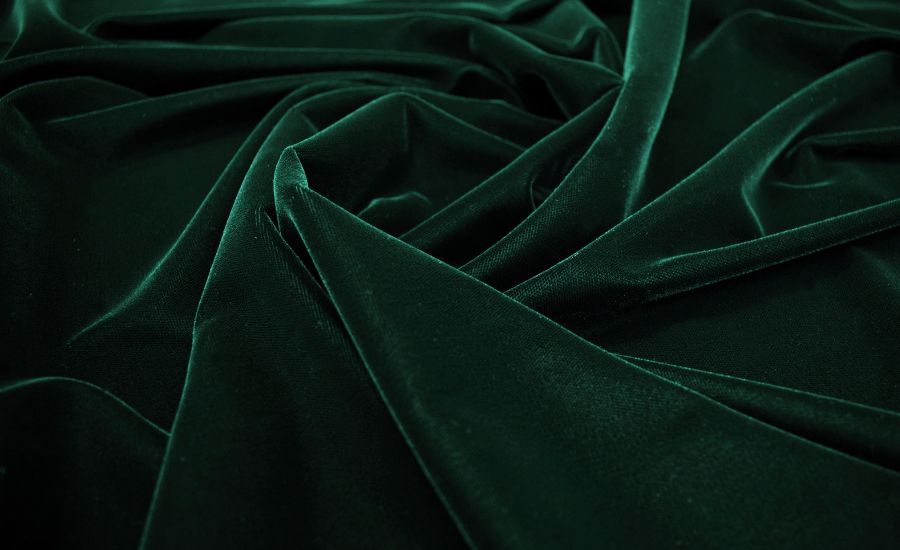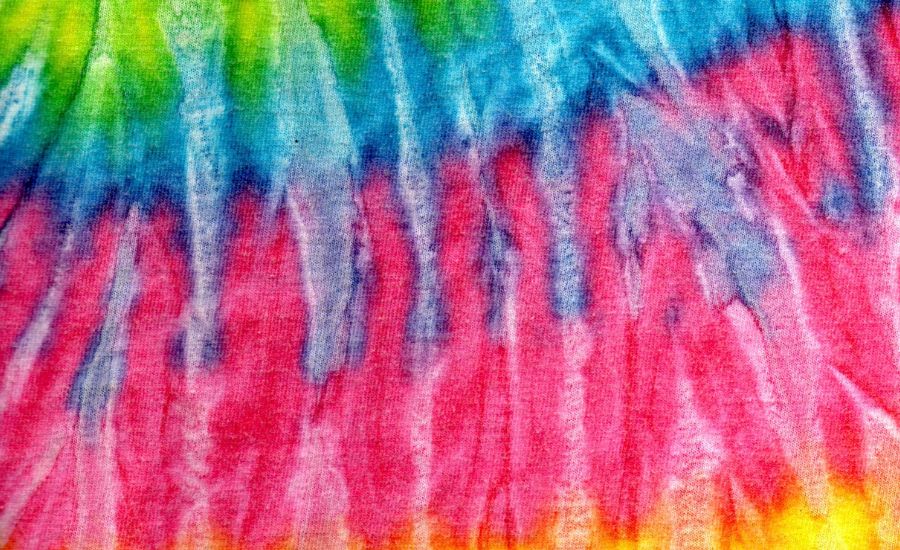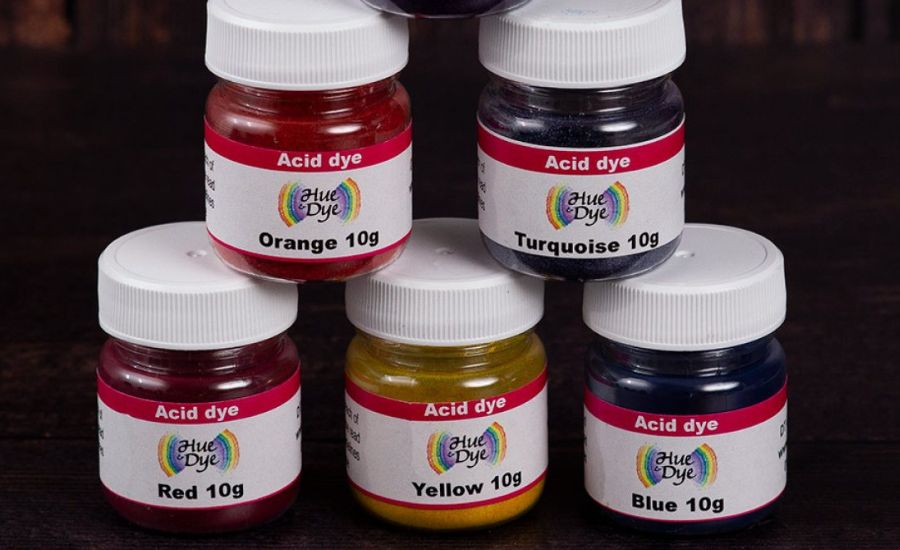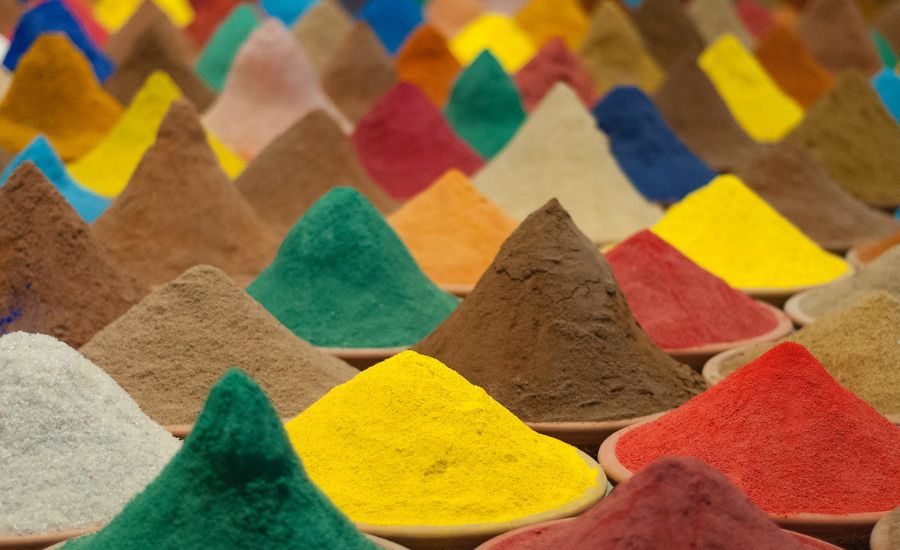What the best fabric dye for velvet? When it comes to customizing and adding a beautiful touch to any velvet material, choosing the perfect dye is very important. In this article, we will examine the best fabric dyes that are perfect for clothes and furniture to give a touch of glamour to your velvet fabric.

Why dye velvet?
One of the most common reasons for dyeing velvet is to personalize the fabric or furniture to suit individual preferences. People often want to create a unified aesthetic by matching the color of their velvet items to the rest of their home’s decoration.
They can get their desired color dye and dye the velvet to match the style they desire.
Due to exposure to sunshine, cleaning agents, or normal wear and tear, velvet fabrics can fade over time. The fabric’s appearance can be revived and given a new, amazing look by dyeing it. This is a cost-effective technique for extending the life of worn-out or old velvet clothing.
Accidental spills and stains are unavoidable, and they can severely impair the beauty of colorful velvet clothing, the fabric can be dyed to hide these stains, bringing velvet materials back to their former beauty or even improving its appearance with a new color.
Trends in both fashion and color vary over time. Velvet furniture or velvet clothes which were fashionable in the past may now seem outdated. The fabric can be given a contemporary touch through dyeing, making it look modern and in keeping with current fashion and design trends.
For special events like weddings, parties, or themed gatherings, dyeing velvet to match the event’s theme or color scheme can be a wonderful way to create a cohesive and visually pleasing atmosphere. It allows for a custom look that aligns perfectly with the occasion.

Best dyes to dye velvet
These dyes are explained below.
Natural dye
Natural dyes have been used for generations to give garments bright colors. They are obtained from plants, insects, minerals, and other organic sources.
Natural dyes are environmentally friendly because they are renewable and biodegradable. They are in line with sustainable and environmentally conscious methods because they don’t contain dangerous chemicals that can contaminate water supplies or harm ecosystems.
Natural dyes are especially perfect for dyeing velvet delicate silk fibers, velvet curtains, or cotton velvet.
Using natural dye is typically a gentler method than harsher chemical processes, keeping the beauty and softness of the fabric.
Natural dyes have a wide range of colors available and they offer a distinct elegance and charm that go well with the luxurious texture of a velvet fabric enhancing its beauty.
Natural dyes have been used for clothing and textiles by numerous cultures throughout history, making it a fascinating way to pay homage to tradition and history through contemporary creation.
Not all velvet clothing is perfect for natural dyes, acid dye or other dyes suitable can be used to dye velvet fabric in a situation like this.
Natural dye provides no health hazards to individuals using them because they are safe and non-toxic. They are therefore a fantastic option for people who might be sensitive to or allergic to the chemicals present in some other dyes.
Natural dyes can act as a distinctive foundation for creative experimentation. Because plant materials and dying methods vary, artists can produce remarkable designs and patterns by dyeing velvet, giving their work a unique touch.

Reactive dye
Reactive dyes are water-soluble dyes that form a covalent bond with the violet fabric molecules during the dyeing process.
A chemical reaction between the active group of the dye and the hydroxyl groups of the fabric results in the formation of a highly stable and long-lasting color bond. Reactive dyes are excellent for dying natural textiles because of their special chemical affinity, which produces vibrant and incredible results.
Reactive dyes are renowned for producing vibrant and intense colors. Maximum color yield and brilliance are made possible by a chemical bond between the dye molecules and the violet fiber. This characteristic is especially desirable for coloring velvet because it increases the fabric’s luxurious and stunning aesthetic.
The covalent bond formed between reactive dyes and the fabric molecules leads to exceptional colorfastness. The colors resist fading due to exposure to light, washing, or general wear, ensuring the dyed velvet retains its vibrant appearance over time.
Reactive dyes offer an extensive range of colors, ranging from subtle pastels to bold and vivid shades. This versatility allows for creative experimentation and the ability to achieve a wide array of color options to suit different preferences and design aesthetics.
Acid dye
Acid dyes are a particular kind of synthetic dye that is mostly used to color protein-based fabrics like wool, silk, and nylon. The acidic conditions necessary for the dyeing process give these colors their name. The cloth is treated with an acidic material during an acid dyeing procedure, which makes it easier for the dye molecules to adhere to the fiber.
One of the most notable qualities of acid dye is its ability to produce intense and vibrant colors. The dye molecules of acid dye have a strong affinity for protein fibers like silk, resulting in rich and deep shades.
This vibrant coloration is particularly desirable when dyeing velvet, as it enhances the fabric’s luxurious appeal.
Though natural dyes are usually used for natural fibers, cotton velvet and synthetic velvet, acid dyes can also be used as an alternative for cotton fibers, natural fibers, and synthetic velvet materials.
Acid dyeing offers superior colorfastness, ensuring the colors remain vibrant and true even after exposure to light and repeated washings. This property is essential for preserving the beauty and richness of a velvet fabric often used in clothing and home décor.
Acid dye is amazing for dyeing synthetic or polyester materials or if you want to dye furniture velvet.
Acid dye is very common due to its versatility because it can be used to dye velvet sofa, velvet shoes, and nylon or synthetic fibers.
An acid dye can be applied to dye velvet in a variety of ways, such as immersion dyeing, and painting, and you can even tie dye velvet fabric with this versatile dye.

Disperse dye
Disperse dyes are organic compounds characterized by low solubility in water. Since they have a high affinity for hydrophobic fibers. They adhere well to synthetic fibers, especially those that repel water like polyester and acetate, The word “disperse” comes from how these dyes were dispersed as tiny particles within the dyeing medium, making it very easy for them to penetrate the purple fiber.
Disperse dyes are specially made to work with synthetic fibers like polyester, which are often blended with velvet to increase its stability and tensile strength. They are attracted strongly to the fibers, ensuring that the dye penetrates and adheres to the cloth effectively.
These dyes require high temperatures to effectively penetrate and dye both synthetic fibers, natural fibers, and normal fibers.
They also offer a vast spectrum of colors, including bright and vibrant shades. This feature is particularly appealing when dyeing velvet, as it allows for the creation of visually stunning and richly colored fabrics, enhancing the luxurious look and feel of the velvet.
Disperse dyes produce a flat and uniform dying effect, guaranteeing a consistent color dispersion throughout the velvet fabric. Uniformity is essential to get a polished and professional appearance and improve the overall quality of the dyed velvet.

How to dye velvet?
Following these easy steps you can dye velvet yarn, dye velvet fabric, velvet sofa, or shoes.
Clothes
When dyeing velvet clothes or when you dye velvet fabric you should follow a specific set of steps to ensure an even and vibrant coloration. Clean the velvet cloth thoroughly to remove any dust, dirt, or residues that might affect the dyeing process.
To dye a velvet dress select an appropriate dye type based on the fabric composition, acid dyes work well for both natural and synthetic materials.
Pre-treat the fabric with a mordant to enhance color intensity and fastness, especially if intend to dye a velvet dress using natural dyes.
Follow the dye manufacturer’s instructions to prepare the dye bath, ensuring the correct ratio and other necessary additives.
Immerse the fabric into the dye bath and agitate gently to ensure even dye distribution. Follow the dyeing time and temperature recommendations, rinse the fabric thoroughly to remove excess dye, then wash with a mild detergent.

Furniture
Dyeing furniture like a sofa is just as easy as dyeing normal fibers, begin by cleaning the furniture thoroughly, ensuring no residue.
Apply the dye evenly using a brush or spray, and allow it to dry completely.
Depending on the dye type, heat or a fixing agent might be necessary, you should consider applying a fabric protector after dyeing to increase durability.
Curtain
Dyeing velvet curtains is also an easy task, just clean the curtains thoroughly to remove dust and grime.
Go for a fabric dye suitable for the fabric composition of the curtains when dyeing velvet curtains, usually reactive or acid dyes and soak the curtain in the dye, ensuring even dye application on both sides of the curtain.
Rinse the curtains well and allow them to air dry or tumble dry based on fabric care instructions.
Shoes
Clean the velvet shoes to remove any dirt, select a dye appropriate for the shoe material, usually a fabric or leather dye, and use a brush or cloth to apply the dye evenly on the shoe surface.
Allow the velvet shoes to dry completely, then consider applying a sealant to protect the color and material.
Addition tips for dying velvet
- Quick test. Consider performing a dye test on a little, unnoticeable portion of velvet to check the color outcome and make sure it matches your expectations before dying the full velvet dress or item.
- Using warm water. When you dye velvet materials, use warm water in the dye bath to facilitate dye absorption. Follow the dye manufacturer’s instructions for the optimal water temperature.
- Weight. Be mindful of the weight of the fabric or object you are dying because it can change the color’s intensity. Brighter colors may appear on lighter materials, while subtle colors may show on heavier ones.
- Storage. Store any leftover dye in a cool, dry place away from direct sunlight to maintain its potency for future use.

FAQ
Can you use fabric dye on velvet?
Yes, there are several dyes you can use on your velvet clothes or furniture to produce an amazing upgrade.
How do you dye velvet with Rit dye?
You can dye a velvet fabric by simply submerging it in a boiling dye bath of Rit dye until you are satisfied with the result.
Can you dye Velour fabric?
You can dye cellulose fibers and velour fabrics using certain dyes specified for them, these dyes include fiber-reactive dyes and disperse dyes.
What fabric dye works the best?
The best dye depends on your taste and personal preferences, however, Jacquard and Rit dyes are generally considered to be the best dyes.
Conclusion
When you dye velvet, you give your velvet upholstery, shoes, or clothes a modern touch and drastically improve its appearance. By taking the necessary precautions and using this article as a guide you can easily dye any velvet belonging you have to make it look more amazing than it already is.




